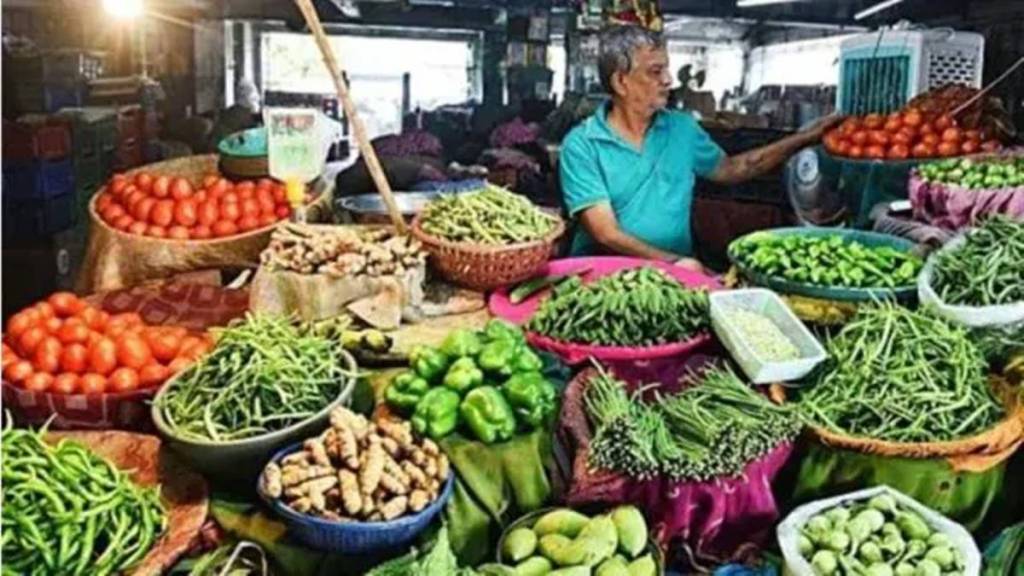By R Gopalan & MC Singhi
There have been considerable discussions on the divergence between inflation measured by consumer price index (CPI) and wholesale prices. The divergence is usually attributed to the definition of prices, composition of commodity basket, and method of deriving weights. While WPI (wholesale price index) and CPI food inflation appear relatively correlated, we see that the non-food inflation measured in terms of WPI and CPI diverge significantly. This is normal and we will examine why it is so.
Both CPI and WPI derive their weights from output, CPI from consumption and WPI from production while both are not directly related to value added. WPI consists of only commodities in their basic forms; intermediates and final product and weights are assigned to them at each stage. CPI draws weights from consumption expenditure, and the final products, and excludes the basic and intermediates. For the basic, intermediate, and capital goods in WPI, there are no counterparts and equivalent products in CPI. The comparative products in CPI and WPI are the consumer goods, both durables and non-durables. Similarly, services have no representation in WPI, being a commodity-based index. Therefore, the comparison of WPI and CPI is in itself not appropriate and their convergence is purely coincidental. If inflation across commodity and services groups moves in a narrow range, convergence could be expected. We look at food in CPI and WPI to see the convergence (figure 1).

CPI and WPI food inflation move in tandem; although overall WPI food inflation is lower, the difference between them could be attributed to increased margins. Both have high standard deviation indicating more volatility over time and the coefficient of variation of both series at 68% of CPI and 76% for WPI is range-bound.
On the other hand, the non-food CPI and WPI inflation move differently. While non-food CPI is more stable, non-food WPI fluctuates and is more volatile. While the average WPI inflation for non-food during January 2014-July 2026 has averaged 2.81%, the standard deviation and coefficient of variation during this period has been 6.6% and 235% respectively, indicating extreme volatility. CPI non-food on an average sees an inflation of 5.15%, but standard deviation and coefficient of variation are only 1.37% and 26.7% respectively, indicating stickiness of inflation. Month-on-month inflation of non-food CPI has moved in a narrow band and has averaged 0.42%; and except for four months, it has moved within (+/-) 1%. The increase is therefore continuous with no base effect on an aggregate basis. While different commodities or services may have shown a different inflation trajectory, collectively these have converged to a monthly narrow band leading to stickiness in year-on-year inflation.
WPI non-food comprises basic goods, intermediates, capital goods, and consumer durables. Data in respect of these independently indicate a negative inflation during October 2014-July 2016 and again from May 2023 to April 2024. Within the four broad non-food groups, consumer durables move generally in line with food, but three other groups, especially the basic and intermediates, are highly volatile. Volatility is very high for intermediates and basic goods. The range of inflation for basic goods varies from (-)13.7% in August 2015 to a high of (+)27.3% in May 2022. Similarly, intermediates inflation varies from (-)7.5% in June 2023 to a high of 20.2% in August 2021. Non food inflation is influenced largely by international prices. Petroleum, steel, and other metals and chemicals have seen significant international price movements on either side.
A part of the difference between CPI and WPI is also the prices taken for these indices. While in CPI, it is what the consumer pays and is inclusive of taxes, WPI is tax insulated making it one-to-one between domestic and international prices. One could also consider implicit GDP deflator for output (as both WPI and CPI are output-based). Output GDP deflator for both CPI and WPI commodities and services show an upward increase in 2021-22 (10.6% for goods and 9.7% for services) and a moderation to 7.5% for goods and 6.8% for services in 2022-23. There may be further moderation in 2023-24, but there is a data lag and quarterly data is not available. The above in a sense validates the past data. The movement of inflation of non-food CPI and WPI is indicated in figure 2.
With a completely diverse commodity composition, we cannot expect convergence between CPI non-food and WPI non-food inflation. We need to keep in mind that the two indices are for two different purposes. While CPI captures consumer prices based on observed personnel consumption data, WPI is a partial producer price index (PPI). A complete PPI would need to be established, which will be more inclusive. Until it is instituted, a working solution can be evolved so that basic goods, intermediates, and capital goods are factored in for inflation assessment. Interest rates and liquidity concerns significantly affect producers’ choices of investment and inventory holdings. Therefore, CPI cannot be an exclusive anchor for monetary policy decisions.
The authors are former civil servants.
Disclaimer: Views expressed are personal and do not reflect the official position or policy of Financial Express Online. Reproducing this content without permission is prohibited.

